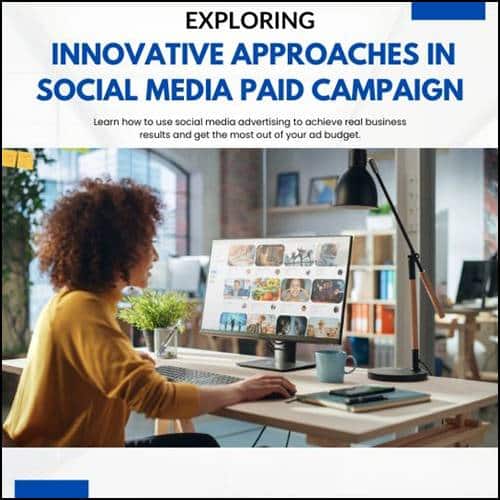
The exponential growth of social media platforms has dramatically transformed marketing strategies across businesses worldwide. Social media paid campaigns, a core facet of this digital revolution, have enabled businesses to target and engage consumers with unprecedented precision. However, the ever-evolving digital landscape necessitates constant innovation and adaptation to maximize campaign efficiency and return on investment. This article will delve deeper into the innovative approaches shaping the future of paid social media campaigns.
1 . Mastering Personalization And Targeted Content
The need for personalization in advertising is continually gaining popularity. Today’s consumers expect and appreciate personalized content that resonates with their unique interests, preferences, and behavior. Personalization enhances the relevance of an ad, thereby significantly improving user engagement.
For instance, consider a digital marketing campaign by a fitness company. By utilizing the resources at https://pointdot.com.au/, they can create segmented ads targeting individuals with a specific interest in health, wellness, and fitness. These tailored ads can feature the company’s new product line of protein shakes, fitness gear, or workout regimes. This approach can help guarantee that the ad content aligns with the interests of the targeted audience, thus increasing the chances of higher engagement and conversion rates.
2 . Harnessing The Power Of Video Marketing
Video marketing is at the forefront of social media paid campaigns due to its high engagement rates and compelling nature. Videos offer a dynamic way to tell a brand’s story or demonstrate a product’s usability.
Consider a home decor brand aiming to increase the visibility and sales of its products. They can create a series of short, engaging videos showcasing before-and-after transformations of living spaces using their products. Such videos not only provide valuable content for viewers but also serve as strong visual endorsements of the products, inspiring potential customers to explore the brand further or make a purchase.
3. Embracing Augmented Reality (AR)
AR has emerged as a powerful tool in social media paid campaigns by offering an immersive, interactive brand experience. It can transform conventional ads into engaging experiences that create memorable user-brand interactions.
For instance, a furniture brand can leverage AR to provide a ‘try before you buy’ experience. By creating an AR filter, users can visualize how a specific piece of furniture would look in their own homes. This enriches the user’s shopping experience and can significantly increase sales, offering a direct way to drive conversions.
4. Implementing Artificial Intelligence And Machine Learning
AI and ML are reshaping social media advertising with their ability to process vast amounts of data and identify user behavior trends and preferences. These insights can be used to create highly targeted and effective ads.
Take, for example, an e-commerce brand looking to improve its ad targeting. By using AI and ML to analyze user data such as past purchases, browsing behavior, and product preferences, the brand can predict which products a user may be interested in. Consequently, it can create personalized ads showcasing these products, improving both ad efficiency and conversion rates.
5. Capitalizing On Influencer Partnerships
Influencer partnerships offer a potent blend of authenticity, trust, and creativity. They enable brands to reach engaged audiences with content that feels organic and genuine.
A clothing brand, for instance, can collaborate with fashion influencers who align with their brand aesthetic. The influencer can create content featuring the brand’s products and promote them to their followers. When such content is used in paid campaigns, it often results in higher engagement and conversion rates due to the existing trust between the influencer and their audience.
6 . Employing Programmatic Advertising
Programmatic advertising automates the buying and selling of social media ad space, optimizing the process with speed, precision, and efficiency. It allows brands to reach their target audience at the right time and in the right context.
For instance, a tech company launching a new gadget can use programmatic advertising to target individuals interested in technology, gadgets, and innovations. By automating the buying process through real-time bidding, the company ensures its ads reach the intended audience at an optimal time. This increases the overall campaign efficiency and maximizes ad spend.
Final Thoughts
Keeping pace with the rapid advancements in social media advertising requires a commitment to innovation and flexibility. From personalization and video content to AR technology, AI and ML, influencer partnerships, and programmatic advertising, there’s a myriad of tools and strategies at a marketer’s disposal. Staying ahead of the curve and consistently experimenting with these innovative approaches will be critical for businesses aiming to create impactful and effective paid social media campaigns in the future.
Leave a Reply
You must be logged in to post a comment.